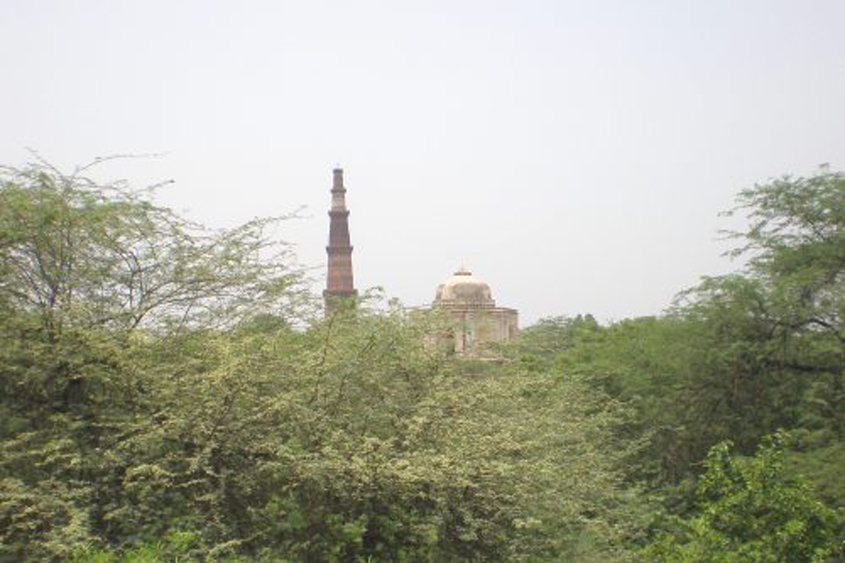The Ridge, considered the city’s lungs, has been ignored for long and forested Ridge areas are being destroyed under the onslaught of real estate constructions and encroachment. Though the Aam Aadmi Party had mentioned the Ridge in its election manifesto, that hasn’t helped matters and the Ridge continues to suffer due to poor state planning and neglect by successive governments.
Researchers here rue the continuous expansion of the capital in irregular and unequal proportions, putting more pressure on the Ridge. What is most worrying is that the “settlement process” required by a 1996 notification by the Delhi administration that gave the Delhi Ridge the status of a reserved forest, has still not been completed.
Thomas Crowley, a researcher with Delhi-based Intercultural Resources, who has been working on the capital’s political ecology for six years, said, “The Ridge is a fundamental part of Delhi, but it hardly figures in the public imagination. This was not the case earlier. Until 2006, we had seen protest movements to preserve Ridge land. However, as the city has expanded and other issues have garnered more attention, the Ridge has faded into the background.”
Environmentalists have reprobated the destruction of forested Ridge areas to create residential high-rises, large malls, five-star hotels, corporate offices and luxurious farmhouses for the city’s elites. The Ridge provides crucial ecological functions like protecting Delhi from the heat and dust of nearby Rajasthan, serving as a groundwater recharge zone, and also shelters a wide variety of flora and fauna. It also helps mitigate the effects of climate change, but has still been neglected by successive governments.
The effects of these changes on the people who lived in and around the Ridge have been severe. According to Supriya, a scholar at the Department of Anthropology, Delhi University: “The villagers near the Ridge feel that their life has been affected negatively after the Ridge has been taken away from them or built over. Groundwater level has reduced in the area. They have less land now and even though many have shifted to non-agricultural occupations, the people feel they lag behind the rest of the city in terms of development. Many middle-class people still see the Ridge as a green space, so they want to conserve it as such, but they think of green spaces as parks rather than forests. The poor people want the land use to change in many parts of the ridge and give way to housing, small businesses etc.”
Read Also: JNU constructed buildings illegally
Supriya said, “The Aravali area is characterized by shallow aquifers that are dependent on seasonal rains for recharge and have traditionally formed a barrier between the surface and the deep aquifers. The area under the ridge provides the only palatable groundwater in the city. It serves to filter groundwater and hence groundwater in and around the ridge is of better quality than the rest of Delhi.”
Talking about the state management of the Ridge, Crowley said, “The administrative peculiarities of the Ridge explain the present mismanagement. Much of the Ridge is under the watch of the Horticultural Division of the DDA, rather than the Forest Department. The Horticultural Division specialises in creating recreational parks rather than maintaining the ecological health of forests — hence the creation of the Kamla Nehru Park in the Northern Ridge, and Buddha Jayanti Park and Mahavir Jayanti Park in the Central Ridge. These ‘beautifying’ measures, especially the clearing of the underbrush, destroy the habitat of many Ridge plants and animals, and lessen the area’s effectiveness as a carbon sink and as a check on rising heat and winds.”
Supriya said, “The Ridge has been a victim of mismanagement due to the control spread over different agencies. The Ridge has thinned out over the years. I have been passing the central Ridge almost every day and now all you see in terms of vegetation is ‘kikar’. Paths have opened up, satellite dishes and ashrams and parks have come up. The tree canopy is very sparse now. On the Naraina-Dhaula Kuan road, you could not see what lies beside the road, among the trees, till about 15 years ago, but now, there are massive clearings there. Similarly, the North Campus Ridge looks more like a park. Even in JNU, the vegetation has thinned considerably in the past 10 years.”
Crowley said, “The Aam Aadmi Party was the only party to mention the Ridge in its election manifesto, but its discussion of the Ridge has been brief. Also, the language of the manifesto — protecting the Ridge from encroachments — can also be used to justify large-scale demolitions, so it is difficult to predict the path the government will take.”

